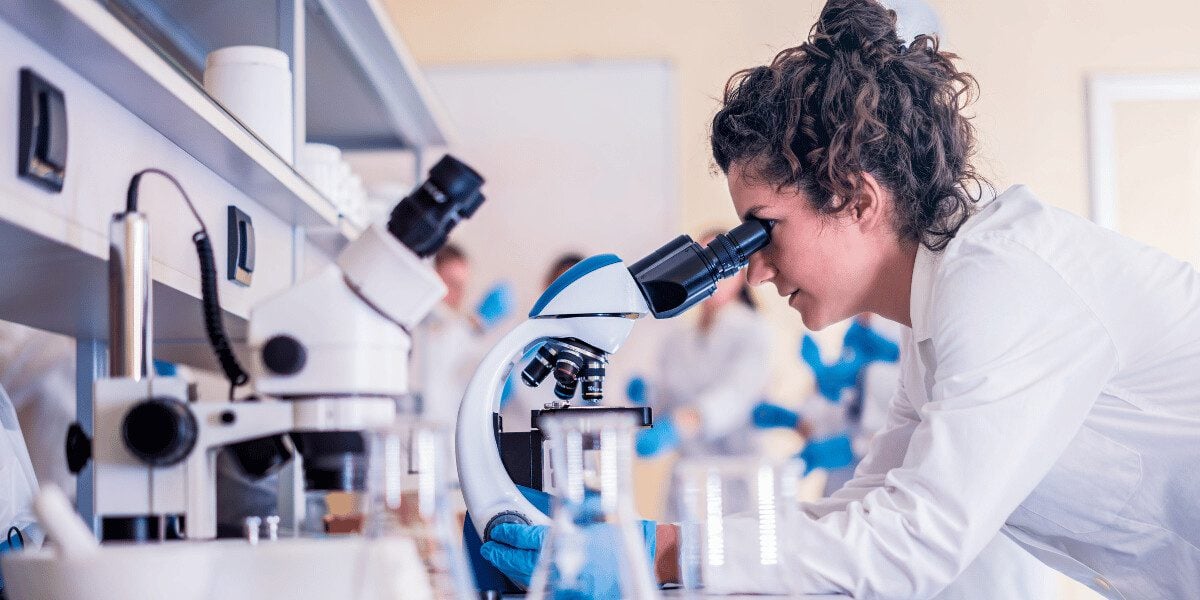 Throughout the ALS research community, you’ll find brilliant scientists working tirelessly on promising breakthroughs. In our Under the Microscope series, we are shining a light on some of these scientists leading collaborative projects supported by Target ALS, including as part of the Target ALS Diagnosis Initiative — work that could someday change the outlook for ALS and FTD patients worldwide.
Throughout the ALS research community, you’ll find brilliant scientists working tirelessly on promising breakthroughs. In our Under the Microscope series, we are shining a light on some of these scientists leading collaborative projects supported by Target ALS, including as part of the Target ALS Diagnosis Initiative — work that could someday change the outlook for ALS and FTD patients worldwide.
Meet Philip Wong, Ph.D.
When it comes to treating ALS, one of the biggest hurdles is in finding a biomarker to aid in early diagnosis and ultimately help develop treatments. For Dr. Philip Wong, Professor of Pathology at Johns Hopkins School of Medicine, his work focuses on identifying TDP-43 cryptic exons — a breakthrough that could have far-reaching benefits in the biomarker discovery process.
Name: Philip Wong, Ph.D.
Professional title: Professor of Pathology, Johns Hopkins School of Medicine
Project: Identification of TDP-43 cryptic exons as antemortem fluid biomarkers for ALS
Please tell us about your project for which Target ALS has provided funding.
The central goal of the project is to develop monoclonal antibodies designed to selectively recognize peptides encoded by TDP-43 cryptic exons which form as a consequence of TDP-43 loss in patient’s biofluids, including cerebrospinal fluid (CSF) and serum. Initial characterization of these antibodies will be performed using brain and spinal cord samples from cases and controls. Subsequently, biofluids such as CSF and serum from patients will be tested for the presence of cryptic exon peptides using these validated monoclonal antibodies. As inclusion of cryptic exons serves as a surrogate for TDP-43 nuclear clearance which is thought to occur early in the pathogenesis of ALS, these antemortem biomarkers would be useful for clinical applications, including recruitment of patients during the early stage of the disease and monitoring of target engagement.
How would you explain this research to someone without a background in science or medicine?
It is well-recognized that treating patients at their earliest stage of disease should yield the greatest benefit. Yet, to diagnose ALS during this early stage remains a challenge due to

the lack of appropriate methods (termed biomarkers) that monitor the root cause of the disease. Our discovery of a biomarker, termed TDP-43 cryptic exon, that serves to detect the root cause of ALS, provides the opportunity to develop a strategy to monitor such critical events in the blood or CSF of patients. This biomarker will be instrumental for recruitment of patients at an early stage of disease and monitoring therapies in clinical trials.
Are you using any of the Target ALS scientific core resources or tools to advance your work? If yes, which ones and what value do they provide?
We will be using The Target ALS Tissue Core. This core will provide valuable brain and spinal cord tissues to validate the series of monoclonal antibodies designed to recognize TDP-43 cryptic exon targets.
Have you encountered any barriers in ALS research? How have you overcome them or what would be helpful to you in addressing them?
Acquiring sufficient research funds to perform critical studies remains a challenge. Foundations, such as Target ALS, serve an essential role to support exploration of novel ideas that can have a major impact in the future. We anticipate that this biomarker effort will yield a dividend for patients with ALS.
Targeting the discovery of biomarkers has become a big focus in ALS research, including through the Target ALS Diagnosis Initiative. How might you describe a biomarker to someone who isn’t a scientist? Once biomarkers are discovered, how/why will they be important to the field?
A biomarker is a tool employed directly/indirectly to detect a biological change occurring in a given stage of disease such as ALS. The earlier a biomarker can detect alteration, the greater its value. For example, treatment of patients during the early stage of disease would be predicted to be most beneficial. Moreover, a biomarker that tracks with the root cause of disease would also be attractive. Such biomarkers can be used to evaluate therapeutic strategies designed to address the root cause of disease.





